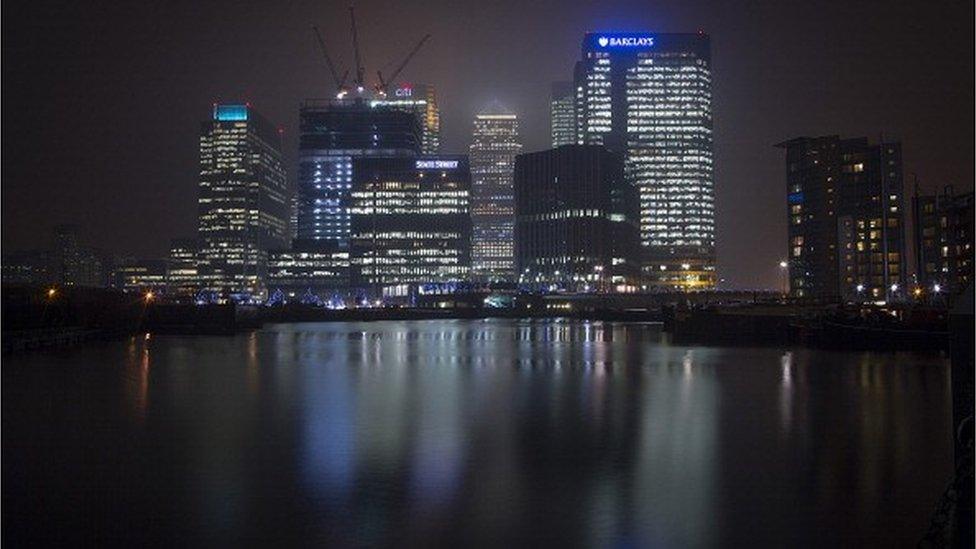Barclays – back to the future
- Published
- comments

In 2012, Bob Diamond departed as chief executive of Barclays in what was described by many of his allies as a "drive by shooting".
The man holding the sawn-off shotgun was Lord King, then the governor of the Bank of England, who had come to the end of his limited patience with a man who had a big smile, a multi-million pound remuneration package and ran a bank that had just admitted manipulating international interest rates to its own advantage.
To many in the UK establishment, Mr Diamond was also guilty of running a bank whilst American. His swashbuckling style did not seem to fit the more sober, post-financial crisis world.
And corrupt behaviour among his own bankers did not exactly help.
As the news circulates that Barclays is close to hiring Jes Staley as its new chief executive - an investment banker formerly employed by JP Morgan - it is worth remembering how the past three years have panned out for one of the world's more controversial banks.
The problem for Barclays' board seeking to find a replacement for Mr Diamond was that they were caught between two conflicting options.
The first was to find a replacement for Mr Diamond who knew how to run an investment bank - which had, historically at least, generated most of the business's profits.
But finding investment banking chief executives is expensive. The leading candidate, Bill Winters, formerly of JP Morgan and now chief executive of Standard Chartered, would cost at least as much as Mr Diamond.
The board balked at the price - financial and political - of hiring another Big Beast from America, however highly respected Mr Winter happened to be.
The second option was to go in a different direction and find a chief executive who could prove to politicians and regulators that Barclays had changed and was now focusing on simpler, retail banking.
Clean up
It was the second option that won out.
Antony Jenkins, who had run Barclays retail bank and Barclaycard, was promoted to become chief executive.
His mission was to clean up the bank, reduce the size of the investment arm, put in new controls on remuneration and set Barclays on a new, retail-friendly course.
In July, Mr Jenkins was sacked by the new Barclays chairman, John McFarlane.
Investors were getting itchy at the labouring investment bank where the key return on equity invested was languishing below 3% - well adrift of the bank's 12% target.
Stories were legion within the bank of the retail and investment teams at loggerheads.
Those close to Mr Jenkins said, despite the manner of his departure, he left with his reputation intact.
Profits had improved, he had grappled with the cultural change needed at Barclays and the retail bank was performing well.
But Mr McFarlane was approached by other board members who said that Mr Jenkins' time had passed.
Sir Mike Rake, the deputy chairman and firm backer of the investment bank, also announced that he would soon be leaving. His place is set to be taken by Sir Gerry Grimstone, the present chairman of Standard Life.
Return of investment banking
Those close to the process of hiring Mr Staley insist he is no "Bob Diamond Mark II" and that the investment bank will still have to find savings.
The pre-2008 era is definitely over, my sources say.
Mr Staley's job will be to smooth relations between the two arms of the bank.
I am told he will retain the strategy mapped out by Mr McFarlane. Cut costs by simplifying the bank's structure, re-invigorate the investment bank and jettison under-performing businesses.
At a time when most European banks are withdrawing from the investment banking sector, Barclays sees an opportunity - expanding trans-Atlantic global banking and its African operations.
It will be Mr Staley's job to realise it.